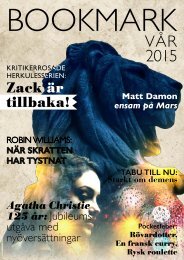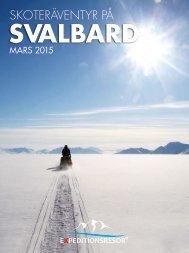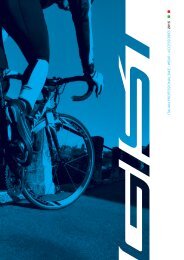Preview
For over 29 years, Preview Magazine has been the best resource for discovering Tulsa, Green Country and locating the perfect place to eat, visit, shop and be entertained whether you are here on business or just enjoying a few days away from the grind. Located in the heart of Oklahoma, Tulsa is a year-round destination for shopping, dining, entertainment, scenic views, hikes and adventure. The rich history of Tulsa and its surrounding areas is reflected in the diversity of its museums, landmarks, history, wildlife, attractions, fine dining and friendly locals. In Tulsa, situated on the Arkansas River at the foothills of the Ozark Mountains, enjoy a performance or sporting event at the BOK Center, fish in one of the area’s many lakes, check out the sharks in the state’s only freestanding aquarium, explore any of the lush parks or break out the clubs and tackle any of the 16 public golf courses. Considered by many to be the cultural and arts center of Oklahoma, Tulsa offers full-time professional opera and ballet companies and one of the nation’s largest concentrations of art deco architecture. Regardless of your personal tastes or budget, Tulsa offers a down-home, yet cultured experience for all ages.
For over 29 years, Preview Magazine has been the best resource for discovering Tulsa, Green Country and
locating the perfect place to eat, visit, shop and be entertained whether you are here on business or just
enjoying a few days away from the grind. Located in the heart of Oklahoma, Tulsa is a year-round destination
for shopping, dining, entertainment, scenic views, hikes and adventure. The rich history of Tulsa and its
surrounding areas is reflected in the diversity of its museums, landmarks, history, wildlife, attractions, fine dining
and friendly locals. In Tulsa, situated on the Arkansas River at the foothills of the Ozark Mountains, enjoy a
performance or sporting event at the BOK Center, fish in one of the area’s many lakes, check out the sharks
in the state’s only freestanding aquarium, explore any of the lush parks or break out the clubs and tackle any
of the 16 public golf courses. Considered by many to be the cultural and arts center of Oklahoma, Tulsa offers
full-time professional opera and ballet companies and one of the nation’s largest concentrations of art deco
architecture. Regardless of your personal tastes or budget, Tulsa offers a down-home, yet cultured experience
for all ages.
Create successful ePaper yourself
Turn your PDF publications into a flip-book with our unique Google optimized e-Paper software.
Returning to Nashville in 1987, Brooks began making connections<br />
with various songwriters and producers, and sang on a lot of<br />
songwriter’s demo tapes. Although he had made several connections<br />
within the industry and had a powerful management team, every label<br />
in town was refusing to sign him. In 1988, he received his break and<br />
recorded his first album with producer Allen Reynolds. The album<br />
was an instant success, with its first single, “Much Too Young (To Feel<br />
This Damn Old),” climbing into the country top 10. Brooks’ debut<br />
was a success, crossing over into the pop album charts, but it was<br />
overshadowed by the blockbuster appeal of Clint Black, as well as other<br />
similar new male vocalists like Travis Tritt and Alan Jackson. Within a<br />
year, Brooks would tower above them all with his surprise, widespread<br />
success.<br />
He had three other hit singles—”If Tomorrow Never Comes,” “Not<br />
Counting You,” and “The Dance”—but it was No Fences that established<br />
him as a superstar. No Fences was released in the fall of 1990, preceded<br />
by the massive hit single “Friends in Low Places.” No Fences spent 23<br />
weeks at the top of the country charts and sold 700,000 copies within<br />
the first 10 days of its release. Throughout 1990-91, Brooks had a string<br />
of number one country hits from the album, including “Unanswered<br />
Prayers,” “Two of a Kind, Workin’ on a Full House,” and “The Thunder<br />
Rolls.” By 1993, No Fences had sold over 10 million copies.<br />
Not only did his record sales break all the accepted country<br />
conventions, but so did his concerts. By the end of 1990, he was<br />
selling out stadiums within minutes and was putting on stadium-sized<br />
shows, patterned after ‘70s rock extravaganzas. Brooks used a cordless,<br />
headset microphone so he could run around his large stage. He had an<br />
elaborate light show, explosions, and even a harness so he could swing<br />
out above the crowd and sing to them. It was the first time any country<br />
artist had incorporated such rock ‘n’ roll techniques into stage shows.<br />
Ropin’ the Wind, Brooks’ third album, was released in 1991 and became<br />
the first country record to debut at the top of the pop charts. Ropin’ the<br />
Wind matched the success of No Fences, selling over 10 million copies<br />
within its first two years of release and spawning the No. 1 hit singles<br />
“Shameless,” “What She’s Doing Now,” and “The River.”<br />
By the end of 1991, Brooks had become a genuine popular music<br />
phenomenon and there were no signs of his momentum slowing down.<br />
Naturally, a backlash began to develop in the fall of 1992, beginning<br />
For the RecordDig into the deep catalog of the maverick who released his ninth<br />
studio album, Man Against Machine, that stays true to the quality and<br />
tone of his past work.<br />
Garth Brooks<br />
1989<br />
Brooks’ fusion of rock<br />
‘n’ roll and traditional<br />
country genres was fully<br />
formed, as was his gift<br />
for extended metaphors<br />
on his debut album. One<br />
listen to his signature song<br />
and breakthrough hit, “The<br />
Dance,” proved that, which<br />
is why he broke away<br />
from the hat acts that he<br />
was initially grouped with.<br />
Brooks stuck with neotraditional<br />
country on about<br />
half of the tracks. He sang<br />
traditional country quite<br />
well—”Not Counting You”<br />
is a particularly effective<br />
honky-tonk number, but<br />
what made the album an<br />
exciting debut were songs<br />
like the genre-bending<br />
ballads “The Dance” and “If<br />
Tomorrow Never Comes.”<br />
No Fences<br />
1990<br />
No Fences, followed<br />
the same pattern as his<br />
debut, but was a more<br />
assured and risky record.<br />
Brooks still performed<br />
neo-traditional country,<br />
such as the honky-tonk hit<br />
“Friends in Low Places,” but<br />
he twisted it around with<br />
clever pop hooks. Brooks<br />
offered the same mix as<br />
any other traditional country<br />
performer—ballads, honkytonk,<br />
and the occasional<br />
kick ‘em-up rhythm tune—<br />
but he found off-the-wall<br />
ingredients to put in it, such<br />
as ‘’The Thunder Rolls.’’ He<br />
also had a feel for whitetrash<br />
anthems, like ‘’Friends<br />
in Low Places,’’ in which<br />
a likable clod declared,<br />
‘’Blame it all on my roots/I<br />
showed up in boots/And<br />
ruined your black tie affair.’’<br />
RoPin’ the Wind<br />
1991<br />
With Ropin’ the Wind,<br />
Brooks began to make<br />
his ‘70s rock influences<br />
more explicit. Naturally,<br />
that was most notable<br />
in his reworking of Billy<br />
Joel’s “Shameless,” which<br />
he transformed from a<br />
rock power ballad into<br />
contemporary country. But<br />
that influence was also<br />
evident on ambitious epics<br />
like “The River” and even<br />
honky-tonk ravers of “Papa<br />
Loved Mama” and “Rodeo.”<br />
Some might say that those<br />
rock influences are what<br />
made Brooks a crossover<br />
success, but he wouldn’t<br />
have been as successful if<br />
he didn’t have a tangible<br />
country foundation to his<br />
music.<br />
The Chase<br />
1992<br />
The Chase was Brooks’<br />
most ambitious and<br />
personal album. Not<br />
coincidentally, it was one of<br />
his least popular releases.<br />
But in its own way, The<br />
Chase was more rewarding<br />
and deeper than Ropin’ the<br />
Wind. That was partially due<br />
to Brooks’ naked ambition;<br />
not only did he record<br />
“We Shall Be Free” with a<br />
gospel choir, but he tackled<br />
deeper social and personal<br />
issues than he had before.<br />
However, the true key to<br />
the album was Brooks’<br />
conviction; even when his<br />
musical experiments didn’t<br />
quite work, it was easy<br />
to admire and respect his<br />
ambition.<br />
In Pieces<br />
1993<br />
Brooks toned down his<br />
experimental eclecticism<br />
on In Pieces alternating<br />
between heavily rockinfluenced<br />
numbers,<br />
dramatic ballads and<br />
revamped honky-tonk. In<br />
Pieces appealed to the<br />
audience that found The<br />
Chase overly serious.<br />
That doesn’t mean Brooks<br />
abandoned his desire to<br />
bend the rules—he just<br />
masked his more ambitious<br />
material with crowdpleasing<br />
up-tempo numbers<br />
like “American Honky-Tonk<br />
Bar Association” and “Ain’t<br />
Going Down (‘Til the Sun<br />
Comes Up).” In Pieces was<br />
an album that was made<br />
for the fans, and it shows.<br />
It is one of Brooks’ most<br />
energetic and exciting<br />
collections.<br />
prevIewgreencountry.com 25

















